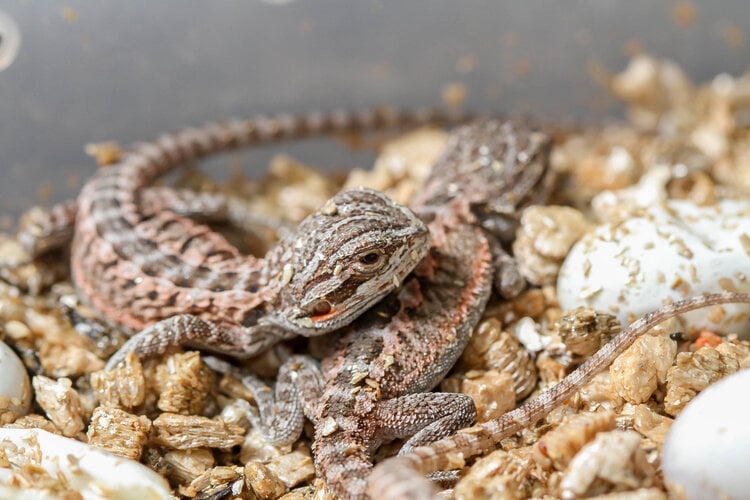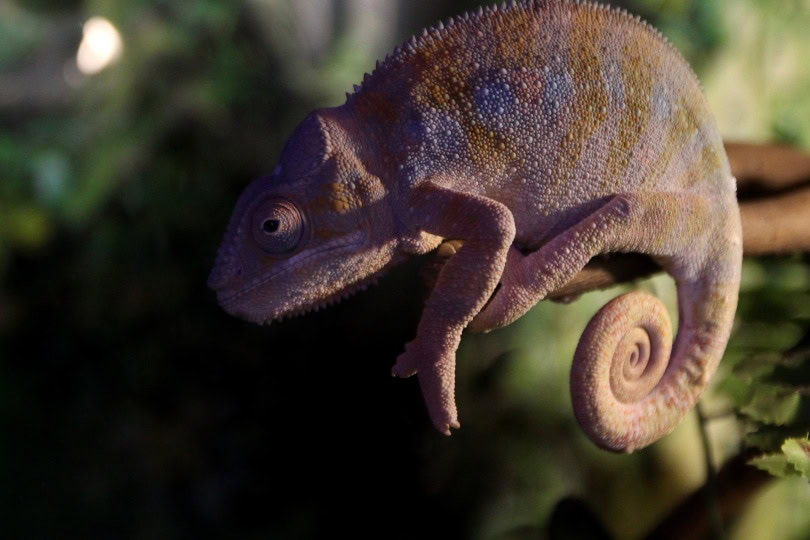VET APPROVED

The information is current and up-to-date in accordance with the latest veterinarian research.
Learn more »Click to Skip Ahead
Bearded dragons are popular pet reptiles and for good reason. They have big personalities and interesting behaviors, making them fun and entertaining. They are also widely available in pet stores due to their popularity and because they are easy to breed, which means there is no shortage of beardies. If you’re one of the lucky ones with a bearded dragon that’s expecting, now is the time for you to get everything together to keep the eggs safe until your new babies hatch.
Here is what you need to know about incubating your bearded dragon eggs at home!

The 7 Steps to Incubate Bearded Dragon Eggs
The health of your breeding beardies (especially the female) should be your priority throughout the process. It’s vital to seek veterinary care for a breeding pair of bearded dragons before commencing with a breeding attempt. Keep in mind that a female can lay eggs even without the presence of a male. In this scenario, the eggs will be infertile (they won’t hatch).
1. Collect Supplies
To successfully incubate your bearded dragon’s eggs, you’ll need a box with a tight-fitting lid, a substrate that holds moisture well like vermiculite or perlite, a DIY or store-bought incubator, and equipment for monitoring temperature and humidity in your incubator. Chicken egg incubators cannot be used for this purpose. They turn the eggs that are placed in them, which will render the eggs of bearded dragons unviable).
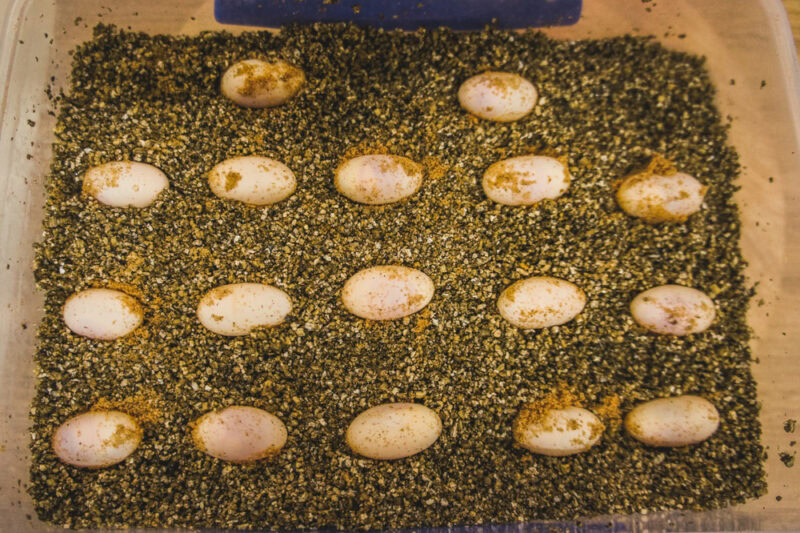
2. Provide a Nest
Your female needs a safe place with a soft substrate to lay her eggs. You may need to remove other beardies from the enclosure for safety and to reduce her stress. She will lay the eggs and likely bury or partially bury them in the substrate, so you’ll need to keep an eye out for this.
3. Prepare the Box and Incubator
Before the eggs are laid, go ahead and add the substrate to the box that you’ll be using. The substrate will help maintain moisture and prevent the eggs from rolling. It’s extremely important that the eggs don’t roll! Check your incubator settings, and ensure that it can maintain a temperature between 82°F and 86°F, with 83–84°F being ideal. Humidity levels should be able to hold steady around 80%.
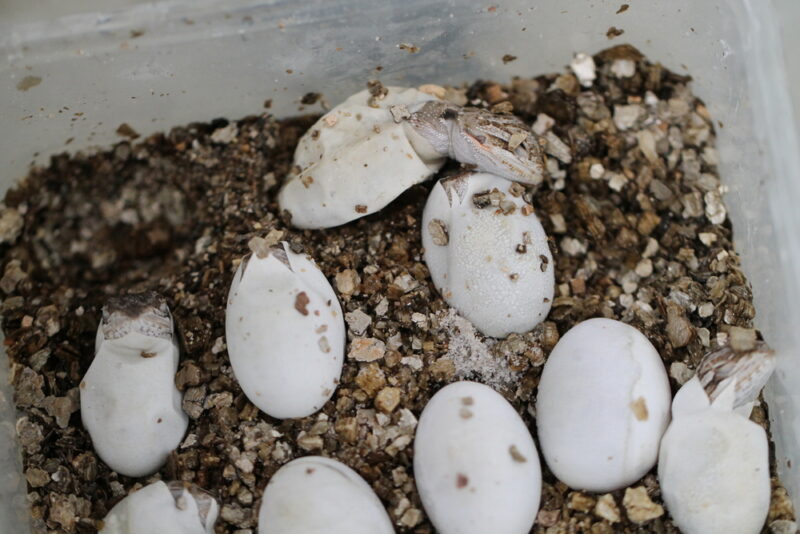
4. Remove the Eggs
Once the eggs are laid, it’s time to move them to your incubation box. It is extremely important that the eggs don’t turn, roll, or flip. Unlike fowl eggs that require frequent turning during incubation, bearded dragon eggs should not be turned at all during incubation. Turning or rolling the eggs can kill the developing fetuses. The eggs should be nestled into divots in the substrate to keep them from rolling and to help them maintain temperature and humidity.
5. Add to Incubator
Double check your incubator settings, and add the egg box to the incubator. Monitor the incubator closely for the first few hours to ensure that it’s not getting too hot or cold. After you’re certain that it’s running correctly, you can switch to monitoring the incubator settings a few times per day.
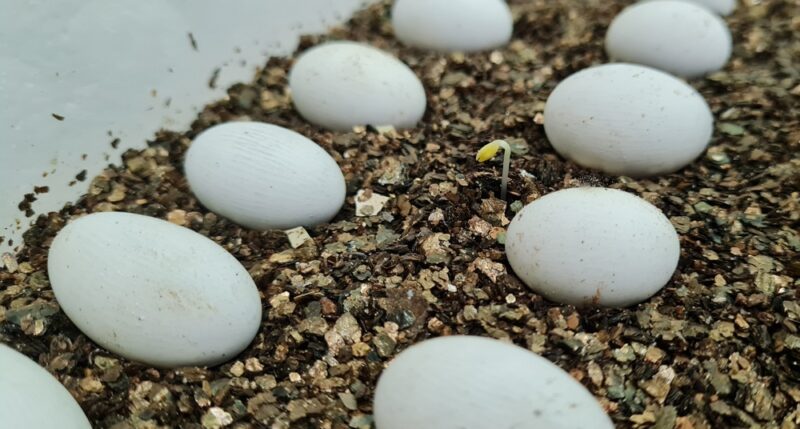
6. Monitor the Eggs
Peek in on the eggs daily. You want to make sure everything is looking healthy and safe. The substrate should not be molding or growing fungus, and the eggs should not look moldy. If you notice an egg that looks like it may be rotting or might be becoming moldy, throw it out. Leaving a spoiling egg in with the healthy eggs can lead to more egg loss.
7. Watch for Babies
Bearded dragon eggs will usually hatch around 60 days after being laid, but it can be anywhere from 40 to 90 days, which is one of the reasons that it’s so important to monitor the eggs closely.
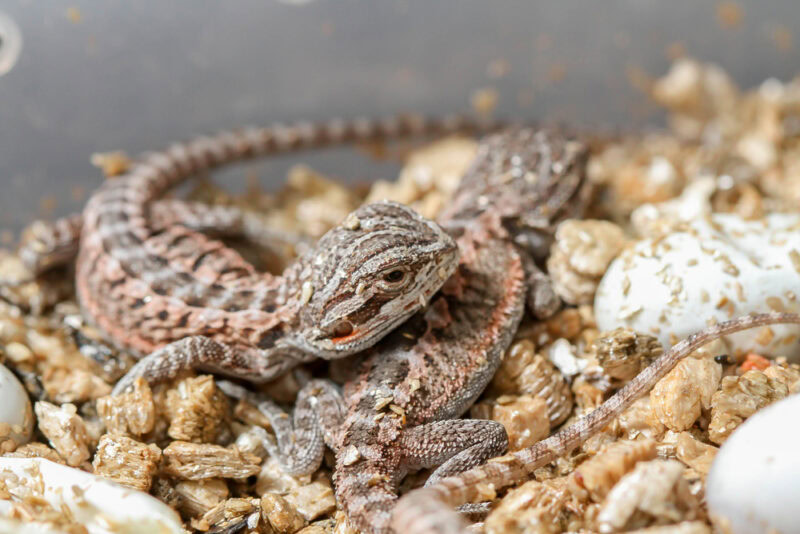

Frequently Asked Questions
Should I Breed My Beardies?
If you’re considering breeding your bearded dragons, there are a few things to consider beforehand. If your bearded dragons have any medical conditions or health issues, you should not breed them. Only healthy beardies should be bred to avoid passing on any health conditions. The other consideration is what you will do with the babies. For one thing, they’ll need a safe place to live while they grow, and unless you’re planning to keep approximately 20 bearded dragon babies, you’ll also need to find them all new homes. You may be able to give or sell them to friends or local pet stores, but in any case, have a plan before you allow your bearded dragons to breed.
What Do I Do Once the Babies Start Hatching?
Once the eggs start hatching, it’s a good idea to leave the first few babies in the incubator for the first day. The movement of the hatchlings will often encourage the rest of the eggs to hatch. After the first day, you can move the hatchlings into their new enclosure. You should consider keeping them separate from the adults while they are still small to ensure that they have space to grow and get enough to eat.
What’s Next?
After 6–8 weeks, your baby beardies should be ready to go to their new homes. If you plan to keep multiple babies, have a plan to split up the males and females as they age. Like most animals, bearded dragons will not differentiate family and will inbreed if allowed to.


Final Thoughts
Incubating your bearded dragon’s eggs isn’t an easy process and requires a great deal of monitoring on your part. If you’ll be away from home for 24 hours or longer, you’ll need someone who can monitor the incubation process and make adjustments as needed. The incubation process is rewarding, though, and it’s an exciting experience to watch your new babies hatch, especially knowing that you played an important role in their development.
- Related Read: Best Bearded Dragon Names
Featured Image Credit: bluedog studio, Shutterstock
